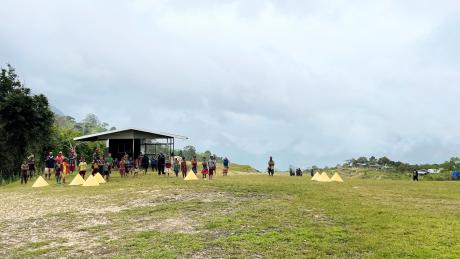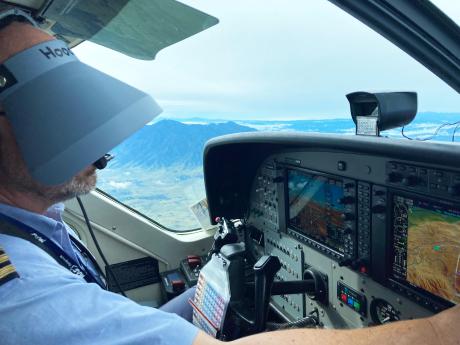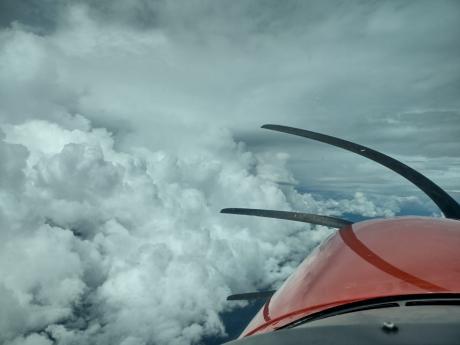
More PNG communities can now be safely reached more often after authorities approved MAF to operate Cessna Caravan aircraft by instrument flight rules. Pilots explain why it’s so important.
Co-authored by Markus Bischoff, Brad Venter, Ryan Cole and Mandy Glass
It is standard in commercial flight operation: flying with exclusive reference to cockpit instruments, which is called Instrument Flight Rules, IFR. As soon as the clouds are too low or too dense or visibility is reduced by fog, flying by visual flight rules (VFR) is no longer possible.
Seeing the ground underneath or flying above a solid cloud layer with clear cloud formations and blue sky above is what MAF passengers are used to and what brings them to the different airstrips. At least most of the time…
Sometimes, passengers return to where they boarded the aircraft in the first place due to weather conditions. Other times, pilots don’t even take off knowing from satellite weather reports that cloud systems are too thick, too low, or too huge to manoeuvre around.
Using IFR and the newly created routes, I was able to get a woman to a hospital where the doctors could perform a C-section. This flight would not have been possible without IFR.
Many of our pilots know IFR flying from when MAF Papua New Guinea operated its Twin Otter aircraft and knew, if only we could get our Cessna Caravan operation certified and approved by CASA PNG for IFR flying, we can improve our customer service immensely.
Ryan Cole is one of the eight pilots who received the IFR training already and knows what to do, when ‘his head is in the clouds.’ He shares about the difference it makes to have the IFR option flying the Cessna Caravan.
“At the end of May, I did a medical evacuation from Tumolbil, a jungle airstrip near the border with Indonesia. The only hospitals with doctors were at towns where I could only go using IFR on that day as the weather was poor. Using IFR and the newly created routes, I was able to get a woman to a hospital where the doctors could perform a C-section,” he said.
“This flight would not have been possible without IFR!”
Towards the end of February 2023, MAF was finally able to commence operation under CASA approval for SEIFR.
Since then, until the end of June more than 60 flights could be completed because the pilot in command was authorised to conquer the weather systems along his path using his IFR skills. Some of these flights carried much-needed vaccines for Provincial Health Authorities from Port Moresby to Madang, Mt Hagen and Telefomin.
Work continues in the background. More pilots will undergo IFR training. More IFR flight routes are being developed.
For non-pilots this might sound complicated, but it is worth it! It shows that MAF takes safety seriously and wants to serve our customers more reliably to bring help, hope and healing to hard-to-reach places.
Brad Venter, as MAF PNG Flight Operations Manager at the time, had a huge input in steering the SEIFR process for MAF.
“In only a few months, the number of flights that have been possible because of the SEIFR option have been truly amazing,” Brad said.
“Wet season in PNG often results in weather turn backs or significant diversions, and not to mention the additional stress that it places on the pilots. On one occasion we had a flight from Port Moresby to Mt Hagen that routed via Goroka while I was in Mt Hagen trying to fly to Goroka with a ministry impact assessment team.
“The weather was terrible, but because we had the IFR option, both aircraft were able to depart and bring our passengers safely to where they needed to be. I am looking forward to seeing how this approval helps MAF in PNG to be even more effective in the future.”

